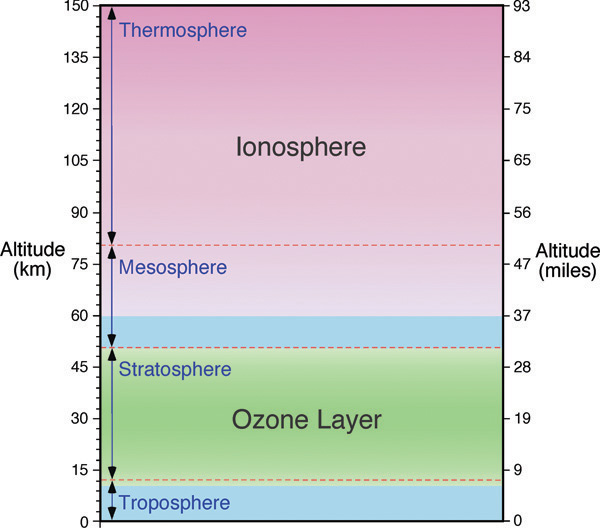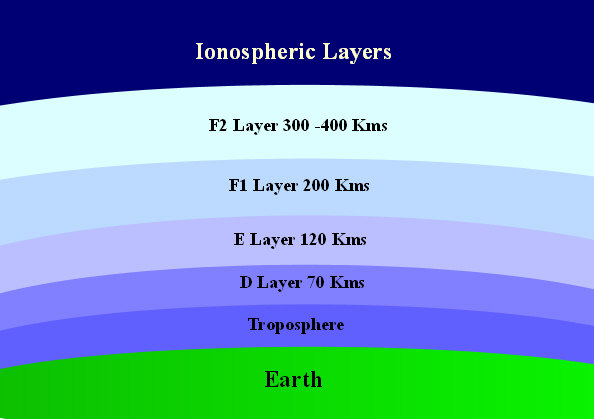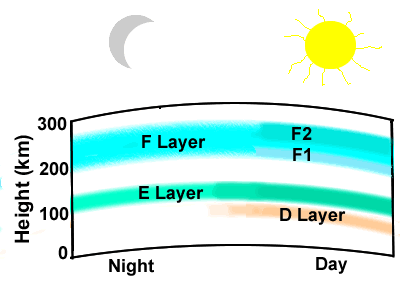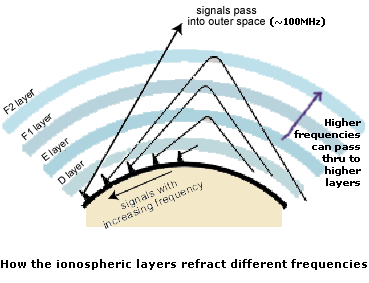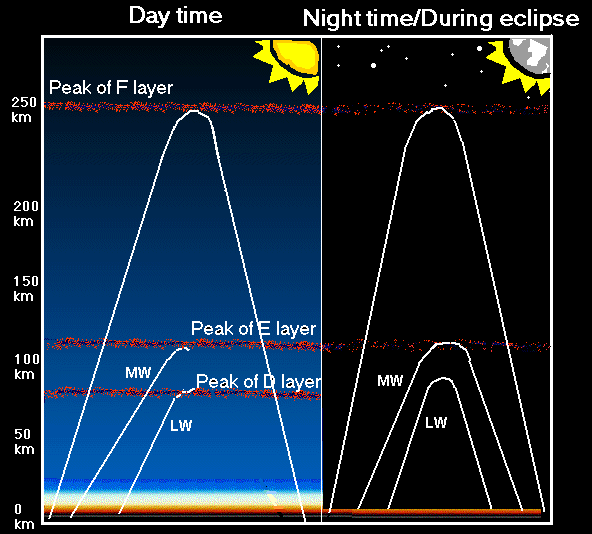Difference between revisions of "Ionosphere Layers"
(→Ionosphere Layers) |
|||
| Line 20: | Line 20: | ||
[[File:ionospherediagram.gif]] | [[File:ionospherediagram.gif]] | ||
| − | When frequency is high enough it penetrates the E region it then may be reflected back by the F1 region, the first part of the F region of the ionosphere. | + | When frequency is high enough it penetrates the E region it then may be reflected back by the F1 region, the first part of the F region of the ionosphere. Then with higher frequency F1 is penetrated and F2 is reflective. With each increase the next layer provides greater distance DX. The maximum skip distance for the E region is around 1550 miles and 3100 miles for the F2 region. |
| + | |||
| + | |||
Revision as of 17:41, 10 November 2015
The study of Sky Wave Propagation is an understanding of how RF is reflected by the various layers in the ionosphere. The Earth's ionosphere is part of the atmosphere around the planet. The ionosphere includes the thermosphere and parts of the mesosphere and exosphere. The ionosphere is a shell of electrons and electrically charged atoms and molecules around our planet that is ionized by solar radiation and influences radio propagation to distant places.
Ionosphere Layers
Scientists have divided the ionosphere into layers, with each layer having specific behavioral characteristics dependent on solar radiation.
There are three main regions within the ionosphere
- D Region - Causes attenuation of RF signals, low frequencies are attenuated more than higher ones.
- E Region - HF radio signals are reflected here back towards the Earth
- F Region - Also reflects HF signals
Technically, the signals are not "reflected" as in a bounce, but they are bent around so that they return to the earth. So it is a "bend" rather than a "bounce."
Medium wave signals use ground propagation only during the day. The D region will absorb any signals it meets. At night the D region becomes invisible and the waves pass though to the E region. The E region reflects the signal back to the ground. Higher frequencies are not reflected by the E region. As frequency goes up, reflection goes down. E region reflection tends to make for shorter hops, meaning shorter distance DX.
When frequency is high enough it penetrates the E region it then may be reflected back by the F1 region, the first part of the F region of the ionosphere. Then with higher frequency F1 is penetrated and F2 is reflective. With each increase the next layer provides greater distance DX. The maximum skip distance for the E region is around 1550 miles and 3100 miles for the F2 region.
